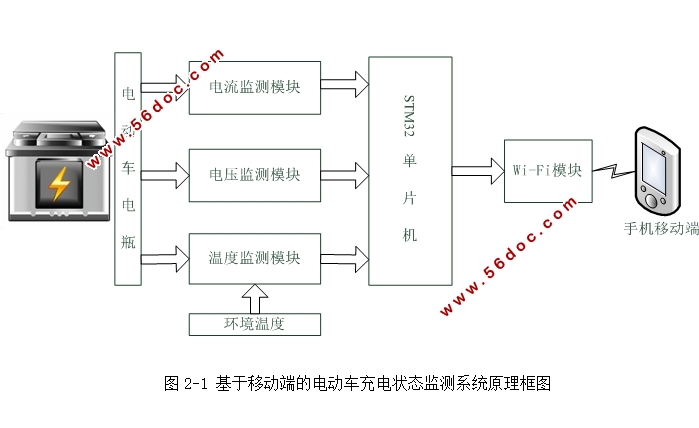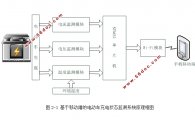基于移动端的电动车充电状态监测系统设计
来源:56doc.com 资料编号:5D27883 资料等级:★★★★★ %E8%B5%84%E6%96%99%E7%BC%96%E5%8F%B7%EF%BC%9A5D27883
资料以网页介绍的为准,下载后不会有水印.资料仅供学习参考之用. 密 保 惠 帮助
资料介绍
基于移动端的电动车充电状态监测系统设计(论文18000字)
摘要:由于电动车在充电时车主无法及时查看其充电进度和异常状况,从而造成充电成本增加,甚至意外火灾事故的发生。针对此问题,本文设计一种基于移动端的电动车充电状态监测系统。该系统通过参数采集电路来收集电动车电瓶的充电电压与电流、电瓶和环境温度等数据,并通过单片机处理得到电动车的充电量和充电进度,然后利用Wi-Fi技术将测量数据无线远距离传输到物联网平台服务器中,并通过手机端web网页进行显示。该系统不仅能让车主通过手机移动端远程地查看电动车的充电状态,而且在发生充电异常状况时能及时警告车主,让车主及时采取措施,避免火灾事故的发生。
关键字:电动车;充电状态;移动端;实时监测
Design of Electric Vehicle Charging State Monitoring System Based on Mobile Terminal
Abstract: As the vehicle owner could not check the charging progress and abnormal conditions in time when the electric vehicle is charging, the cost of charging may increase and even accidents such as fire may occur. To solve this problem, a monitoring system of electric vehicle charging state based on mobile terminal is designed in this paper. The charging voltage and current, battery temperature and ambient temperature are collected through this system by a parameter acquisition circuit, and also the charging amount and charging progress of the electric vehicle could be obtained through single chip microcomputer processing. Then the system can wirelessly and remotely transmit the measured data to the Internet of Things platform server through Wi-Fi technology, so that the detailed data could be displayed through the mobile client web page. The system could not only enable the vehicle owner to remotely check the charging status of the electric vehicle through the mobile terminal of the mobile phone, but could also warn the vehicle owner in time when the charging condition is abnormal, so that measures could be taken immediately to avoid the occurrence of fire accidents.
Key words:Electric vehicle ;Charging state;The mobile terminal;Real-time monitoring

目 录
1 引言 1
1.1 研究意义 1
1.2 研究现状 2
1.3 本文工作内容 3
2 设计方案论证 4
2.1 本设计目的 4
2.2 本设计的技术方案 4
2.2.1 单片机主控芯片的选择 5
2.2.2 电流监测模块的设计 6
2.2.3 电压监测模块的设计 6
2.2.4 温度监测模块的设计 6
2.2.5 Wi-Fi模块 7
2.2.6 手机端显示模块 7
2.2.7 电源模块设计 7
2.3 本设计所带来的有益的优点和效果 8
3系统硬件设计与实现 8
3.1 系统硬件概述 8
3.2 主要单元电路设计 9
3.2.1 电源电路 9
3.2.2 单片机主控电路 10
3.2.3 电流监测模块电路 11
3.2.4 电压监测模块电路 12
3.2.5 温度监测模块电路 12
3.2.6 Wi-Fi模块电路 13
4 程序设计 14
4.1 基于移动端的电动车充电状态监测系统的主程序设计 14
4.2 子程序设计 15
4.2.1 电压监测程序 15
4.2.2 电流监测程序 16
4.2.3 温度测量子程序 17
4.2.4 充电量监测子程序 18
4.2.5 Wi-Fi模块子程序 19
4.2.6 手机端显示子程序 20
5 系统调试 22
5.1 软件调试 22
5.2 硬件调试 23
6 结论 28
参考文献 29
致 谢 31
|



